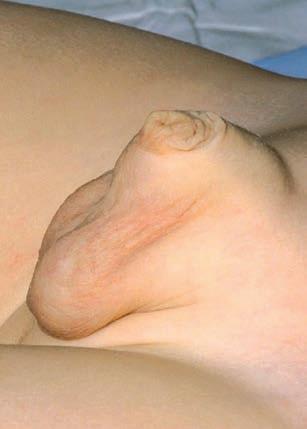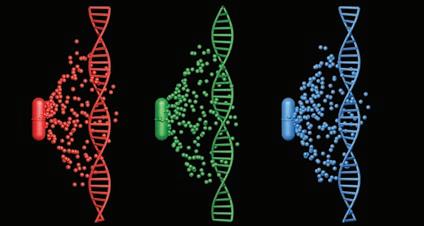
5 minute read
Promises and problems of NIPT
By Professor Jan Dickinson, Maternal Fetal Medicine Specialist, and Ms Karen Harrop, Genetic Counsellor, Subiaco
Prenatal screening is becoming more complex as technology expands the number of disorders potentially diagnosable prior to birth and as screening evolves to incorporate expanded genetic carrier screening and rarer chromosomal malformations.
The options can be overwhelming for health care providers and women, potentially overshadowing the joy of pregnancy if not approached in a reasoned manner. Support and advice from trained genetic counsellors and specialists in prenatal diagnosis should be actively sourced when needed. Current obstetric practice guidelines in Australia advocate offering prenatal screening for fetal structural and genetic abnormalities, with the final decision for testing residing with the woman.
The test performance characteristics of non-invasive prenatal testing (NIPT) for the common fetal aneuploidies are superior to combined First Trimester Screening (cFTS), although the expansion of NIPT into sex chromosome aneuploidy and microdeletion screening is associated with substantial false positive rates. NIPT has resulted in a significant reduction in amniocentesis and CVS. However, this reduction may be reversed if expanded NIPT panels become more widely used. Without a national policy, two main strategies have evolved for NIPT – to offer it as a first line test or after an increased risk cFTS. Clinical considerations NIPT is not considered diagnostic for trisomy 21, 13 or 18. An increased probability result should be confirmed by a diagnostic test (e.g. CVS or amniocentesis). Sensitivity is lower in twin pregnancies.
If NIPT as a primary screen returns an increased probability for trisomy 13 or 18 but the fetus appears unremarkable to expert ultrasound, an amniocentesis (not CVS) is indicated to sample the fetal karyotype. If a cFTS demonstrates a large nuchal translucency (>3.5-4 mm), if the fetus displays structural malformations or if the cFTS result is >1:20 – NIPT is not an appropriate next step. Referral for advanced imaging and a diagnostic genetic test is required. In 1-3%, NIPT fails to provide a result (‘no-call’). This is usually due to a low fetal cell-free DNA fraction (which can be associated with factors like maternal obesity) or laboratory technical issues. Other reasons include fetal chromosomal abnormalities, maternal autoimmune disease or maternal heparin use. In the situation of a no-call result, a repeat NIPT should be offered, but consider referral for expert ultrasound review. Maternal chromosomal abnormalities, malignancies, recent blood transfusion and solid organ transplantation may produce difficulties in the interpretation of NIPT.
Advanced NIPT is now available in the form of genome-wide (GW) cfDNA NIPT; with no additional cost, and no delay in turnaround time (3-5 working days). Genomewide NIPT reports on extra or missing whole chromosomes across all chromosomes, rare autosomal aneuploidies, copy number variations (CNVs) including duplication and deletions, and unbalanced translocations.
Rare autosomal aneuploidies (RAAS) are the monosomies and trisomies not restricted to chromosomes 13, 18, 21 and frequently represent confined placental mosaicism (CPM) (e.g.
Key messages
NIPT is a sensitive and specific screening test for the detection of trisomy 21, 18 & 13, but less so for other chromosomal malformations A fetal abnormality on ultrasound should, in most cases, be regarded as a contraindication to NIPT A no-call result on NIPT may be the first indicator of increased obstetric risk.
trisomy 7). Identifying RAAS early in an ongoing pregnancy may assist in guiding management through the use of serial ultrasound to monitor for IUGR (although there is variance of opinion about this issue). Prenatal diagnosis via amniocentesis is required to identify true fetal mosaicism (TFM) and/or potential uniparental disomy (UPD) if imprinting chromosomes are involved
CNV include deletions, duplications, unbalanced translocations and other complex changes which are screened for across all autosomes (excluding the sex chromosomes), with or without a family or personal history. One in 500 individuals carry a balanced reciprocal translocation and can experience subfertility, recurrent miscarriage, fetal loss or the birth of a baby with a severe disability. Most familial translocations are unique and occur across all chromosomes.
Couples who are balanced translocation carriers, and/or continued from Page 39 Learning and school performance Studies of primary schoolchildren demonstrated a higher proportion of OSA in those in the lowest 10% of academic performance, with subsequent improvement following treatment. The reciprocal has also been shown, that is children with poor academic performance are more likely to have sleep disturbances. As a child’s optimal academic performance is unknown, it is possible that there may still be have experienced a fetal CNV in pregnancy (de novo or familial), report heightened anxiety in subsequent pregnancies. Many couples want an alternative to invasive testing, especially if they have a history of multiple miscarriage. A low probability screening result can provide early reassurance. A high probability screening result guides the appropriate use of diagnostic testing Genome wide NIPT provides most translocation carriers with a non-invasive screening option for their specific, and often unique chromosomal arrangement. It is an option for couples with prior fetal de novo duplication or deletion and low
Paediatric sleep disturbances
risk of recurrence but heightened residual deficits. Teenagers who snored frequently in early childhood (compared to non-snorers) have been shown to be at increased risk for lower academic performance later in life well after snoring had resolved. ADHD and sleep Children with OSA can have oppositional behaviour, cognitive problems, in attention and hyperactivity. Some of these children fulfil criteria for diagnosis of ADHD. Studies have reported that children with mild OSA demonstrate diminished selective and sustained attention compared with controls.

anxiety. It provides information to assist decision making regarding invasive diagnostic testing following a low or a high probability screening result.
Early detection for rare aneuploidies may have implications for pregnancy and fetal wellbeing. For many it is an option for early and safe reassurance, altering the path and early bonding experience of a pregnancy, especially after previous fetal loss or infertility.
– References available on request Author competing interests – nil
These deficits substantially improved following treatment (adenotonsillectomy). Hence careful evaluation of these children is vital to ensure correct diagnosis and treatment.
Sleep disorders in children are common and can cause significant daytime disruption with behavioural and cognitive impairment. Early detection and treatment may prevent or improve behavioural and cognitive impairment.
– References available on request Author competing interests – nil










